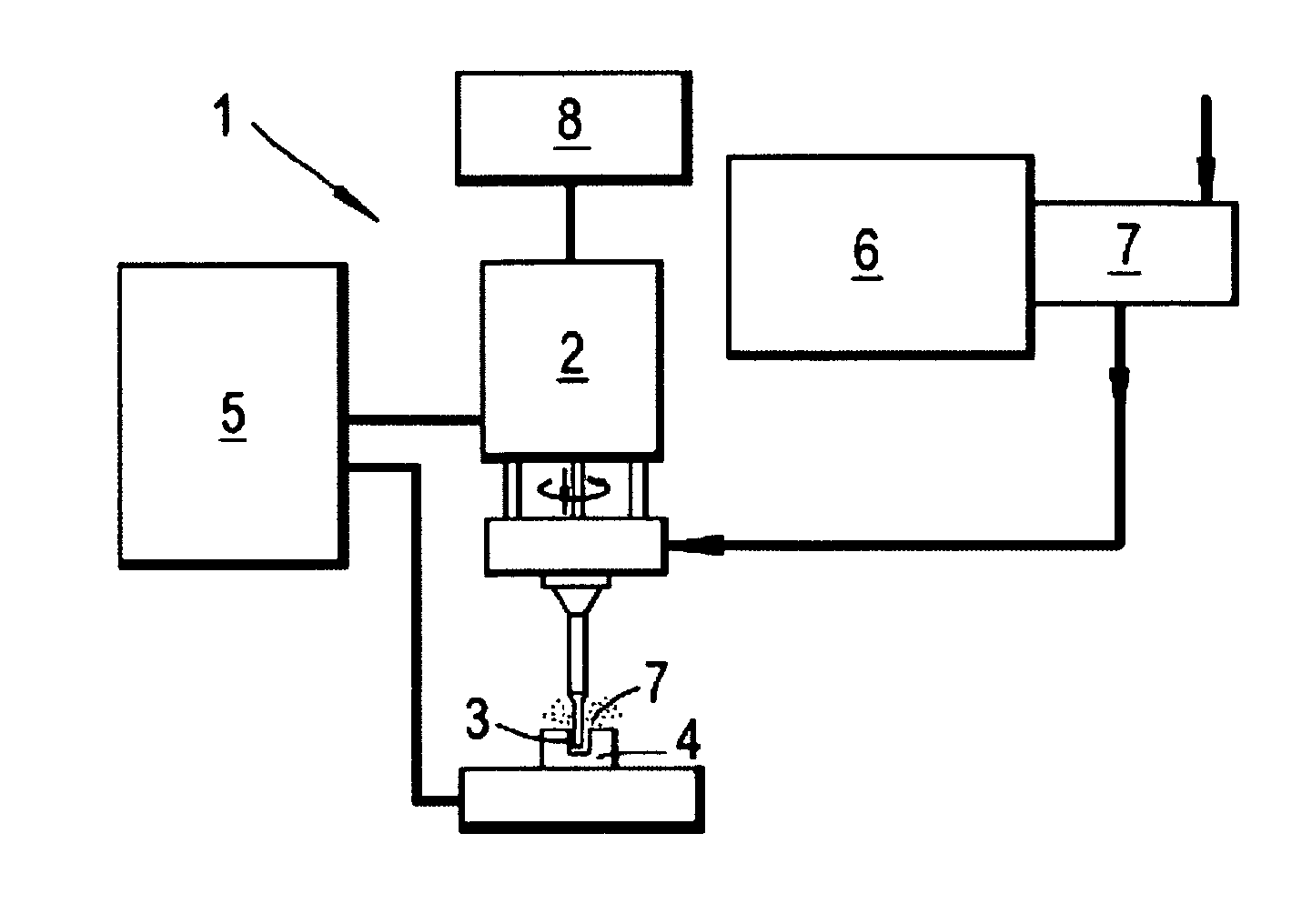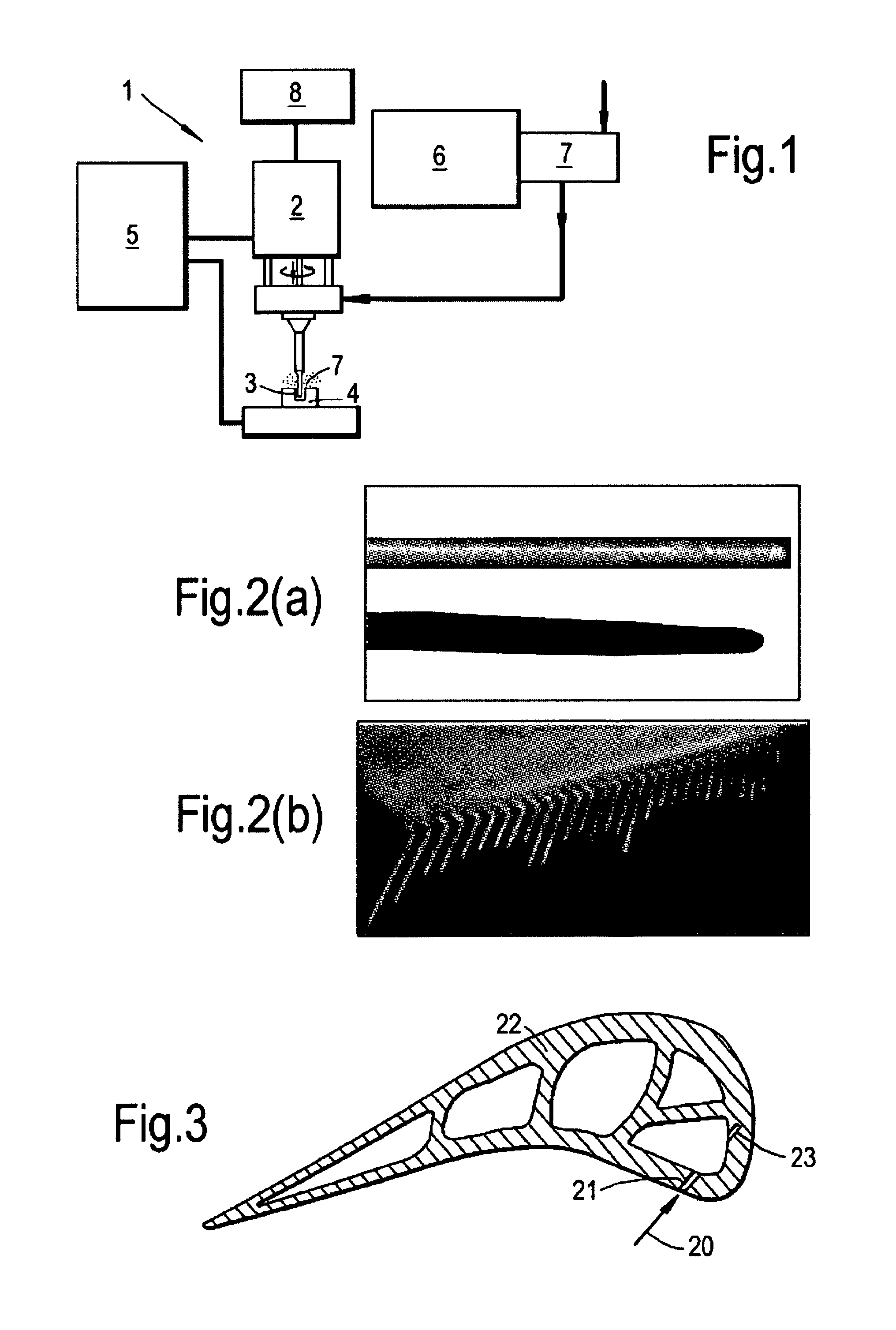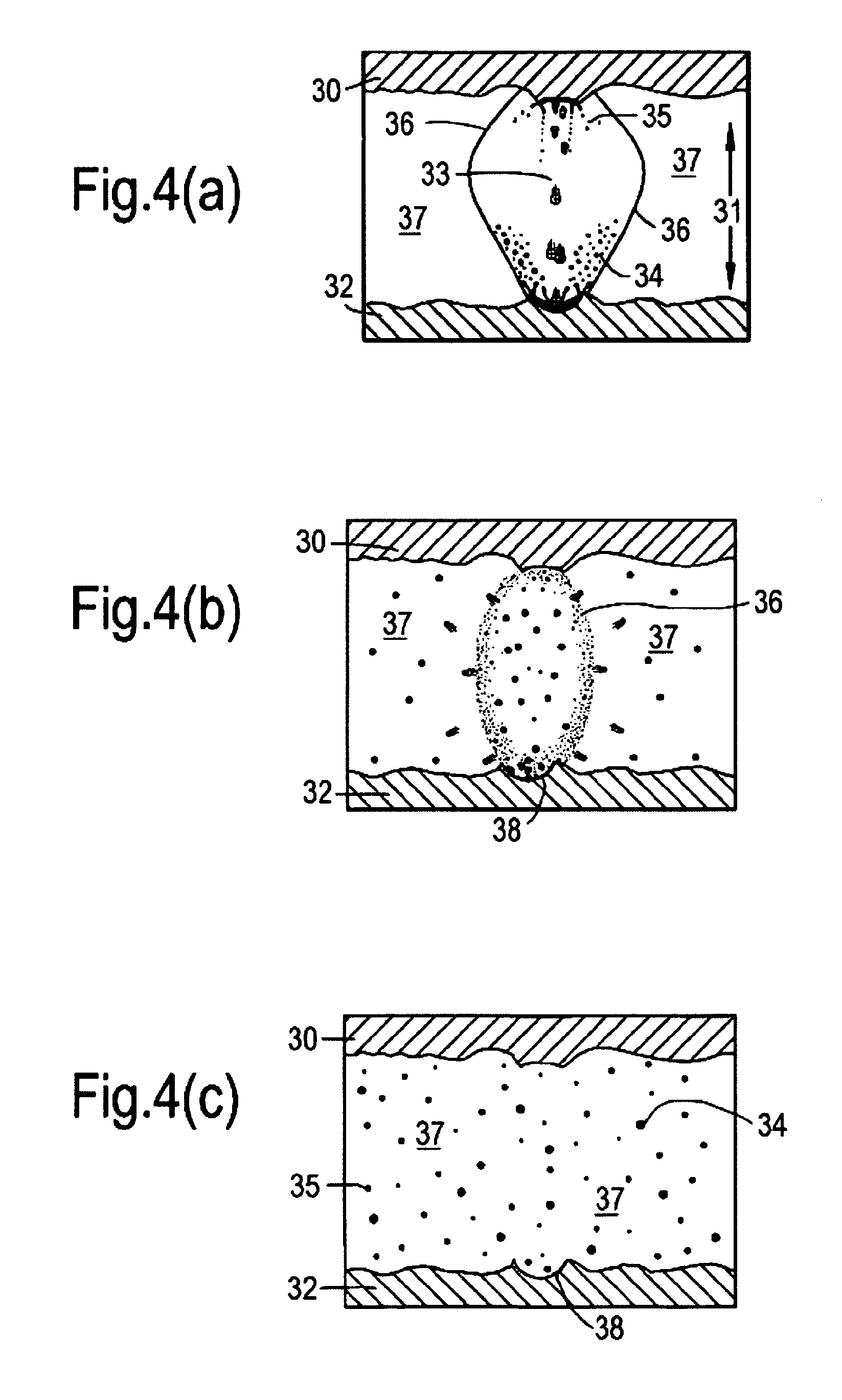Electrical discharge machining
a technology of electric discharge and machining, applied in the direction of manufacturing tools, electrode supporting devices, and vibration holders of electrodes, can solve the problems of increased likelihood of short circuiting, high production cost, and large variations, and achieve the effects of improving the rate of debris removal, efficient clearing of debris, and large spark gap siz
- Summary
- Abstract
- Description
- Claims
- Application Information
AI Technical Summary
Benefits of technology
Problems solved by technology
Method used
Image
Examples
Embodiment Construction
[0060]Removal of debris during HSEDM is important in order to achieve appropriate machining speeds and consistency. Debris is removed by the dielectric flushing out debris in the time between the sparks. This process is shown schematically in FIGS. 4(a) to (c). A gas bubble, illustrated in FIG. 4(a), is generated by high temperatures as a result of spark discharge. This gas bubble then implodes as illustrated in FIG. 4(b). The time between sparks, known as the “off time”, should be sufficiently long to allow dielectric fluid flushing to remove the debris. The off time determines the overall drilling cycle time for electric discharge machining. Lack of adequate debris removal therefore results in increased cycle times. Furthermore, poor debris removal increases electrode wear in the form of tapering. In FIG. 4(a), as can be seen, an electrode 30 has a spark gap 31 to a workpiece surface 32. During electrical discharge a spark-induced plasma channel 33 creates debris 34 from the workp...
PUM
| Property | Measurement | Unit |
|---|---|---|
| Pressure | aaaaa | aaaaa |
| Frequency | aaaaa | aaaaa |
| Frequency | aaaaa | aaaaa |
Abstract
Description
Claims
Application Information
 Login to View More
Login to View More - R&D
- Intellectual Property
- Life Sciences
- Materials
- Tech Scout
- Unparalleled Data Quality
- Higher Quality Content
- 60% Fewer Hallucinations
Browse by: Latest US Patents, China's latest patents, Technical Efficacy Thesaurus, Application Domain, Technology Topic, Popular Technical Reports.
© 2025 PatSnap. All rights reserved.Legal|Privacy policy|Modern Slavery Act Transparency Statement|Sitemap|About US| Contact US: help@patsnap.com



